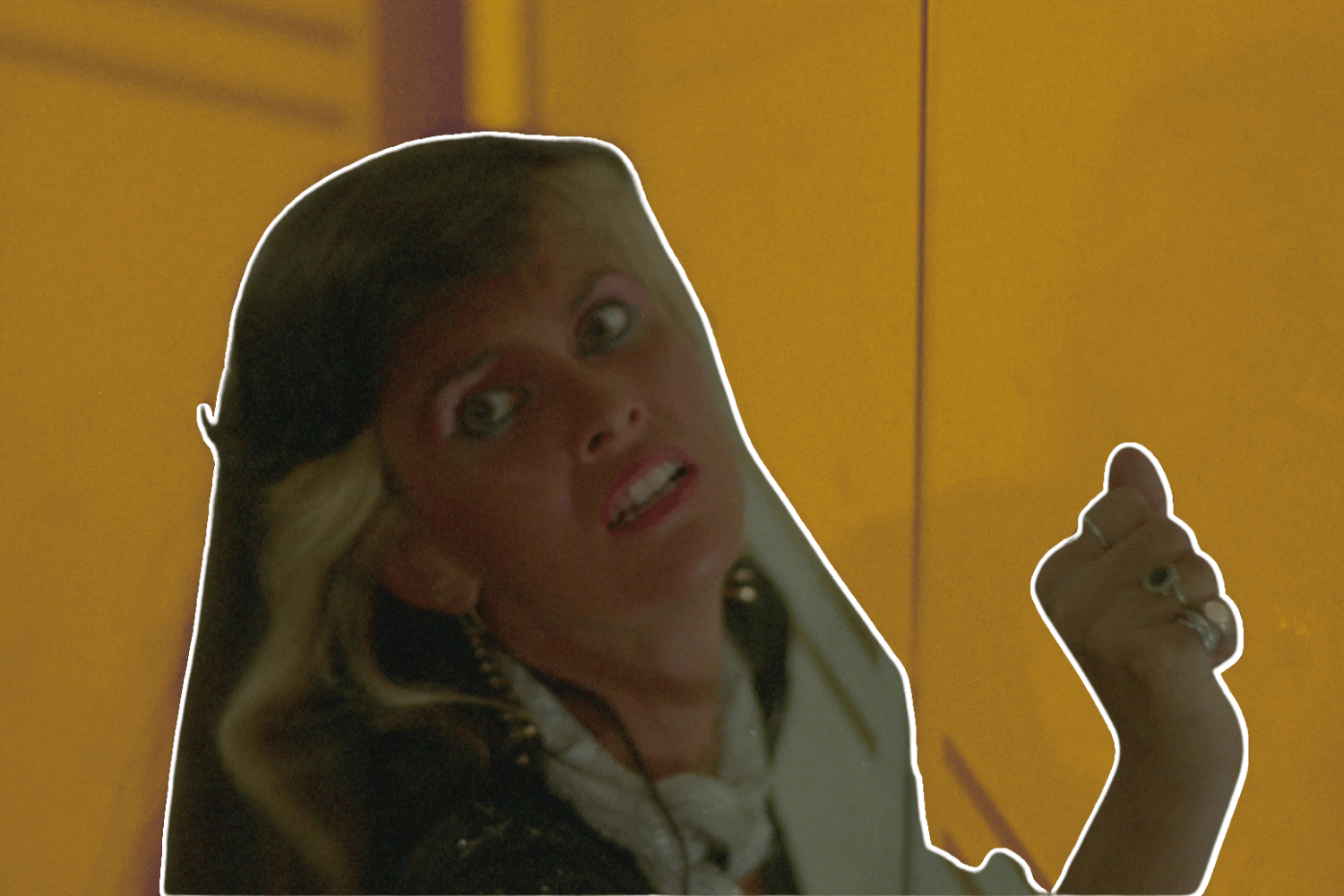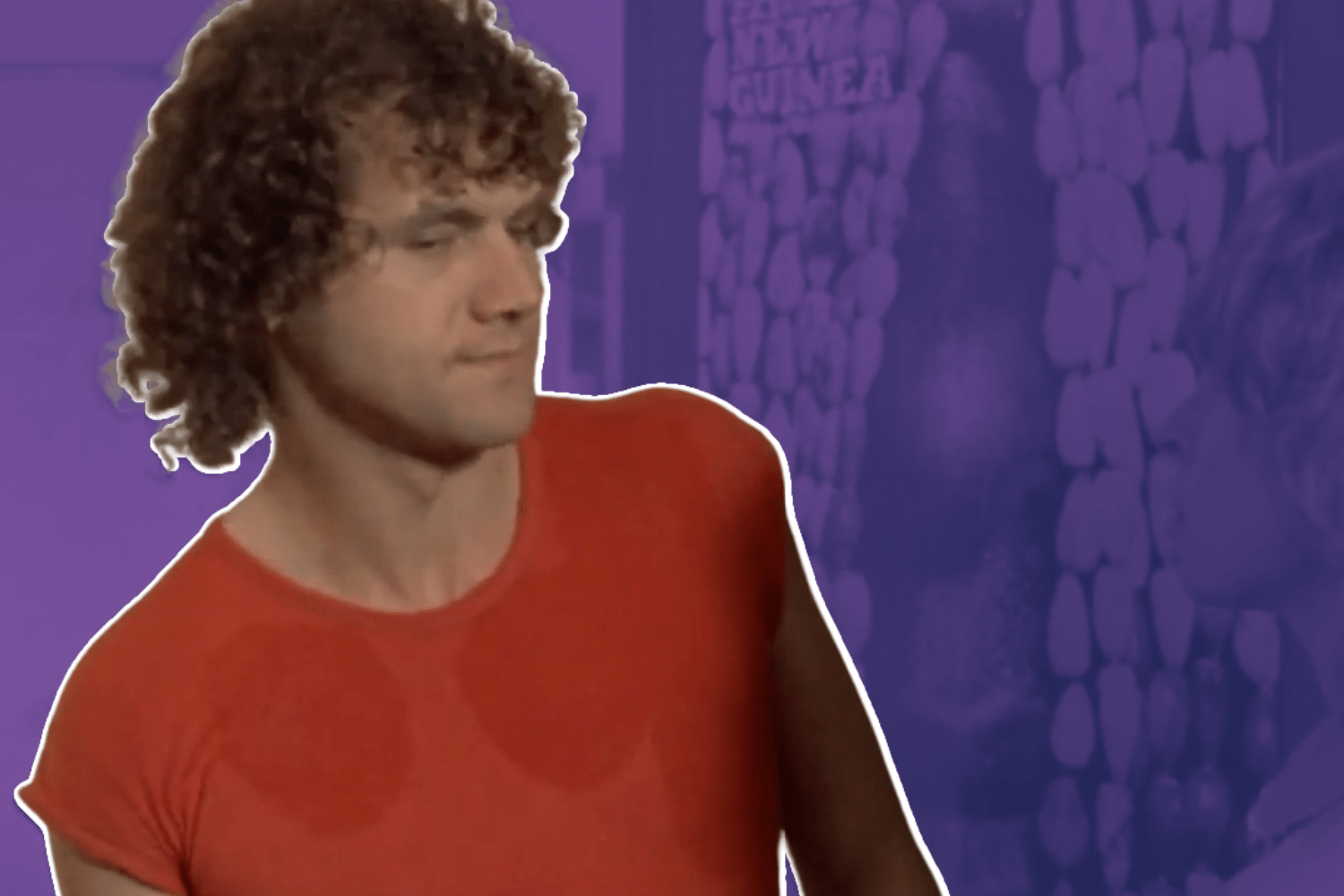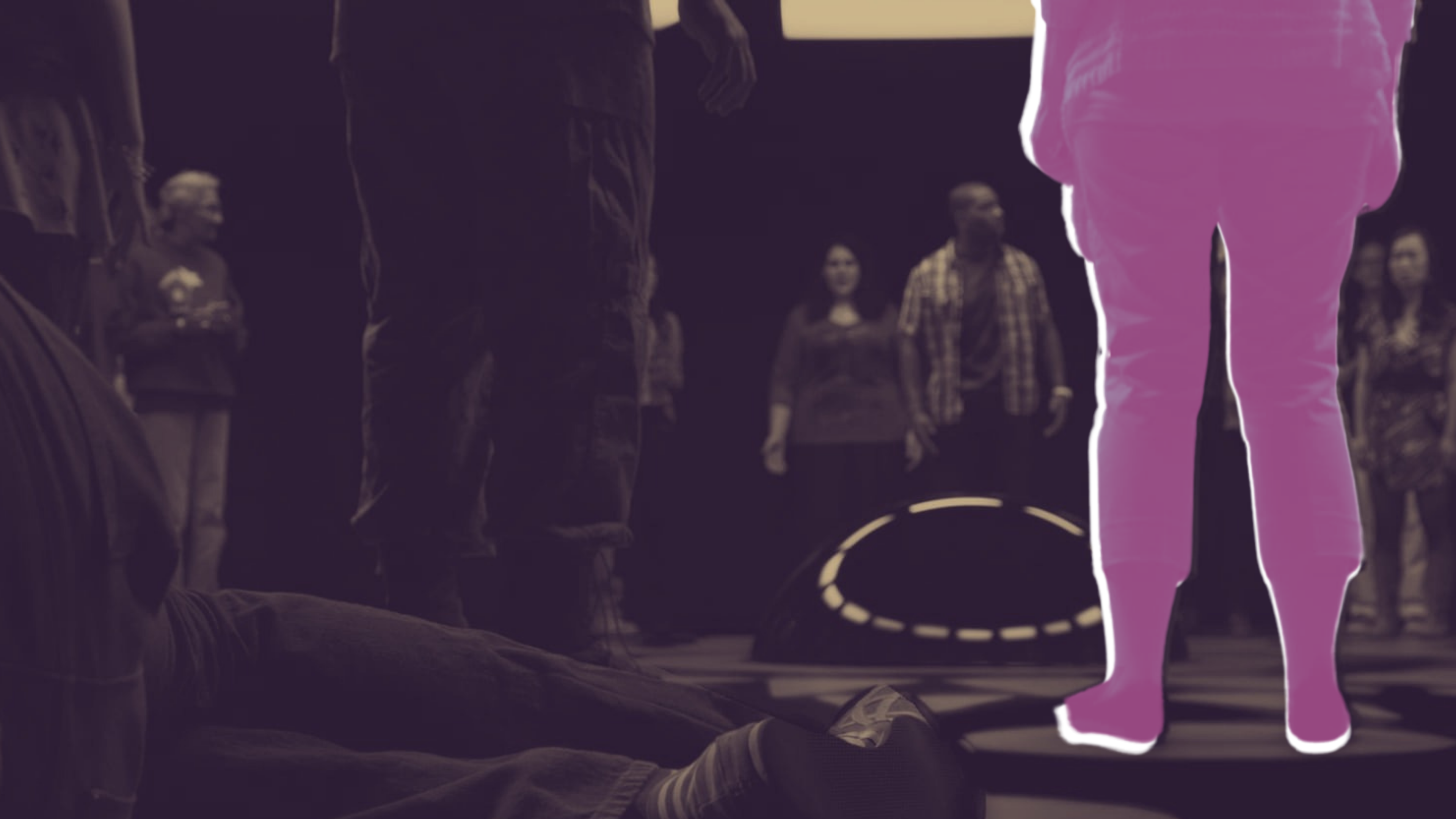Editorials
In ‘The Last Horror Film,’ Sleaze Meets the Meta-Slasher
November 28th, 2022 | By Ciara Moloney

The Last Horror Film (1982) is a cheapo American exploitation movie so loopy you’d swear it must be Italian. It’s off the wall. It’s mesmerising. I am still unsure if the German subtitles in the fantasy sequences are some deliberate avant-garde nuttiness or my copy is just slightly broken. Banned as a video nasty in the UK, it is at once extremely funny, pleasingly gross, and genuinely clever: a self-conscious meta-slasher a decade and change before Wes Craven made Scream.
Scream—coincidentally or not—happens to be the name of the film scream queen Jana Bates (Caroline Munro) is promoting at the Cannes Film Festivalin The Last Horror Film. It is, at once, the Cannes we know and a Cannes from another universe. In one of history’s most audacious examples of what the guys at Red Letter Media call “shooting the rodeo”—when you film a public event and put it in your film, adding instant production value at minimal cost–The Last Horror Film shoots the Cannes Film Festival cinema verité style. It folds the real-life Cannes into its imagined version, into a world where a gory scene of Jana Bates getting her face burned off has the snootiest of critics voting for her as Best Actress ahead of Faye Dunaway, Jane Fonda, Julie Christie, and Meryl Streep.
David Winters—best known for his work as a choreographer, particularly on several Elvis pictures, including Viva Las Vegas—had debuted as a director in 1975 with the Alice Cooper concert film Welcome to My Nightmare, which he followed with the 1979 tennis comedy Racquet. But The Last Horror Film feels like the work of someone with deep roots in the horror genre. It’s both of a piece with the sleazier, trashier elements of the 1980s slasher boom—there are many, many women sunbathing topless in this movie—and a thoughtful, provocative satire of the same.
We open with a woman being killed gruesomely on-screen, followed by the words “The End.” That first kill was playing on a cinema screen inside Last Horror Film’s world: the latest outing for “queen of horror films” Jana Bates. Watching is Vinny Durand (Joe Spinell, reunited with his Maniac co-star Munro), a sweaty, pathetic, unsettling man who fellow audience members mumble is a creep while they shuffle out of the screening. Vinny is a New York City taxi driver who lives with his mother and is more than a little unhinged. He’s obsessed with Jana—the walls of his bedroom are papered in her pictures—but scorns her boyfriend/director Alan Cunningham as a no-talent hack. He fantasises about directing Jana in the film that will win her an Oscar. Convinced of his own genius, he travels to Cannes to meet Jana and persuade her to star in his movie. His mother says it’s a crazy idea—that he’s going to make himself “upset again”—but what would she know?
Vinny’s an unhinged taxi driver, like Travis Bickle in Taxi Driver, in which Spinell had a small role. In Cannes, as he stalks after Jana, we hear snatches of a radio news report about John Hinckley Jr.’s attempted assassination of Ronald Reagan, motivated by an obsession with Jodie Foster that began with her role as a child prostitute in Taxi Driver. Vinny isn’t a direct analogue for Hinckley—rather, Hinckley and Taxi Driver are mere reference points in its negotiation of the relationship between violence in life and violence in art. Journalists ask Jana at a press conference if horror movies are dangerous; an Orthodox priest raises the same issue on the streets of Cannes. Sometimes The Last Horror Film feels anxiously ambivalent about these questions and the morality of its own existence. More often, the film feels gleefully cynical and acerbic: exposing the ridiculousness of the conservative pro-censorship arguments by seemingly playing out their narrative in the flesh.
“I believe people understand the difference between real life and illusion,” Jana says. “I’m just an actress playing a part in a movie.” Then the bodies start piling up.
One by one, Jana’s creative collaborators are killed—each having received a note saying, “You’ve made your last horror film.” Jana’s gotten the same note. She naturally thinks that means she’s next, but no one listens to her. Everyone deems the whole thing a publicity stunt—quite possibly, as one character ominously puts it, the greatest publicity stunt of all time.
You assume it’s Vinny. It’s got to be. He’s a creep and a madman, and he’s trying to get Jana’s attention. He’s papered his French hotel room in Jana Bates pictures, just like at home. On the phone to his mother, he insists that everything is going great and Jana is really excited about his script, and it’s unclear if even he’s one hundred percent aware he’s lying. When Jana goes to a castle in the countryside to get away from the killer, Vinny follows and climbs in her bedroom window. Towards the film’s climax, he chloroforms Jana and drags her away to film a scene for his movie—and to, you assume, kill her.
As it turns out, that’s exactly what the killer wants you to think. We were watching a giallo all along, one so committed to one red herring that you don’t realise it’s a mystery. It might look like horror movies have so melted a creepy weirdo’s brain that he’s gone on a killing spree, but it’s actually the run-of-the-mill, everyday kind of murder: the revenge of a spurned lover. Jana’s producer, Bret Bates (Glenn Jacobson) is enraged that Jana left him for Alan Cunningham. He killed all those people in part to terrify and torture Jana, in part as a riff on Agatha Christie’s ABC Murders: a scheme to mislead the authorities about the nature of the killings. If he just killed Jana, he might be a suspect. If half a dozen of her friends die first, no-one will look his way.
But The Last Horror Film has another twist up its sleeve. At the very end, after Vinny kills Bret with a chainsaw, it’s revealed that the whole movie up to this point is Vinny’s movie, which he’s screening for his mother back in New York. She says she’s very proud of him. “That’s the last horror film I ever make,” Vinny says, then passes his mother a joint. It’s both a return to where we started—like the opening scene, something we took for the film’s reality is revealed as a film within the film—and another meta-slasher tangle to unknot. But most importantly, it’s a perfect punchline.



